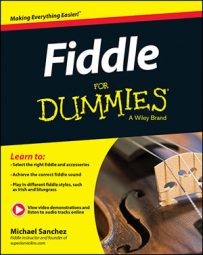Proper finger angles are an important part of playing the fiddle. As you know, bowling is a sport in which you throw a ball down a lane to try to knock ten pins down. You start a little bit behind a certain line and then run up (forward) as close as you can to the line and throw the ball. But what if you had to bowl differently from this?
What if you turned 45 degrees to the left? Now, instead of facing the pins directly, your shoulders are facing the corner of the bowling alley. You can still see the pins fine, but you have to keep your shoulders pointed at the corner of the bowling alley as you run up to throw the ball. This would be pretty awkward, wouldn’t it?
This bowling analogy shows that lining up your shoulders properly is important, and similarly important is the way your fingers are angled on the fiddle. If they aren’t in the right position, playing would be like trying to bowl with your shoulders pointing in the wrong direction. You wouldn’t knock over as many pins, now would you?
Check here in Chapter 6, Video Clip 16 to see what your finger angles should look like on the fiddle and how to do the following steps:
Place your fingers perpendicular to the fingerboard and press down with your 2nd finger on any string.
Take your 3rdfinger and try to stretch as far as you can toward you while keeping your 2nd finger in the perpendicular position.
It’s pretty hard to reach far, isn’t it?
![[Credit: By Rashell Smith]](https://www.dummies.com/wp-content/uploads/458904.image0.jpg) Credit: By Rashell Smith
Credit: By Rashell SmithNow make an adjustment to point all your fingers at your left shoulder. Place your 2nd finger down (pointing at your left shoulder) and see how far your 3rd finger can stretch.
A lot farther, right? This is the proper way to angle your fingers.
In summary, you have to keep your fingers angled back. Although reaching with your hand to find notes may seem more logical, you want your fingers angled back properly so that you can locate notes easier.
Practice seeing how still you can keep your hand while finding notes on any of the strings. Although you haven’t learned all the notes yet, you can still practice not moving anything but your fingers. If you start off with your knuckles properly up and your fingers perfectly angled back, you’ll be able to find every note without having to adjust your hand.
Having big hands helps in both keeping your knuckles up and your fingers angled back because you have more leeway in how high and how far back you have to be. The smaller your hands are, the more important it is for you to do this process correctly.
Now that you understand proper fundamentals for your left hand, keep in mind to check your hand position often. As you start to focus on other things, your hand will want to change positions, and without being aware of it, you can easily slip into a bad habit.
The good news is that it takes about four weeks to build a bad habit. If you’re putting these drills into your rotation, you’ll be fine. The worst thing you can do, though, is to feel overconfident after a few good attempts and then slip into doing it the wrong way. This is very common; don’t let it happen to you!

